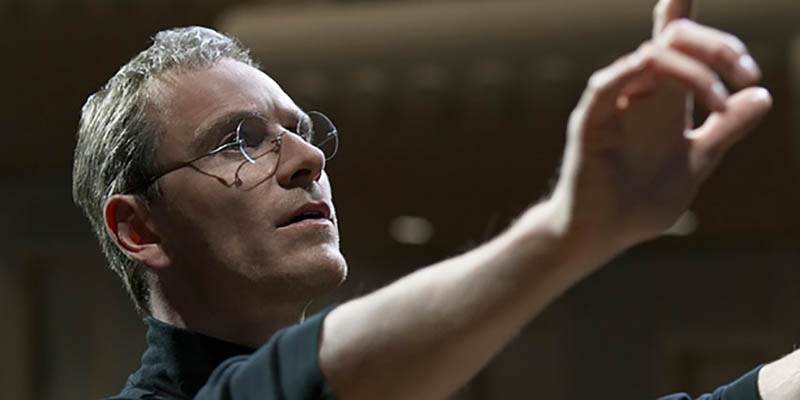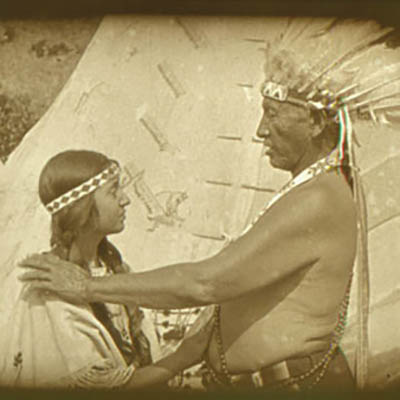Don't shy away
Two of 2015’s best films show darker side of human nature
Abraham Attah and Idris Elba in “Beasts of No Nation”
Beasts of No Nation
If you ignore the news, it’s easy to forget that the world is a scary place. It’s even easier if you’re a white American.
The worst part is this: insularity disconnects us from the truly fucked up places on earth. The places where barely recognizable civilization can be toppled, opening a chaotic vacuum to be filled by conflagration, exploitation, corruption, despotism, and incomprehensible death. From Idi Amin to Pol Pot to Kony, there are ideologies written in blood that feed the powerful while the weak fall (or are honed) by barbarism that should, in a better world, no longer exist.
Because those places always seem far away, their scope and complexity eludes us. The reality that there are people like us—people with the same human fears, joys, and sorrows—who will never know a peaceful life becomes an abstraction.
“Beasts of No Nation” is a stark reminder.
Adapted, directed, and shot by Cary Joji Fukunaga, “Beasts of No Nation” is his long-gestating passion project, conceived before “True Detective” made him one of the hottest properties in Hollywood.
Based on the book by Uzodinma Iweala, “Beasts” tells the story of Agu (Abraham Attah) a young boy separated from his family after his West African village is overrun by a government junta. Barely escaping execution, Agu falls in with a loose band of rebels. Under the tutelage of the Commandant (Idris Elba), Agu becomes a child soldier, participating in seemingly random raids that are part of the larger resistance.
Agu quickly learns to tow the line. Those soldiers who fail the initiation are murdered, and those who thrive are molested by the Commandant, a charismatic father-figure, as he teaches them to kill. Before long, Agu is cleaving heads with old machetes on a harrowing journey into the heart of darkness, one that leaves him scarred both physically and emotionally.
I haven’t seen something so beautiful and powerful since the 2002 Brazilian gut-punch, “City of God.” For those who have seen Fukunaga’s 2009 film “Sin Nombre,” it should come as no surprise that “Beasts” achieves a masterful depth with its characters, and a gorgeous near-perfection in its storytelling. What’s truly awe-inspiring, though, is the authenticity on display. The tangible dramatic currents, shot with humor at the oddest moments (as in life), that highlight how Agu is changed, perhaps irreparably, by the brutal realities of the world.
Our worldview is changed, too, through the sheer, artful force of Fukunaga’s cinematic will.
“Beast of No Nation” is, perhaps improbably, one of the best films of 2015.

Steve Jobs
It’s not news that there is often a wide gulf between a film’s critical and financial success. And, by definition, a proportionate disconnect between critics and audiences. That’s apparent in the existence of “Grown Ups 2” or the unfailing success of Michael Bay—who might be an actual cyborg who defied his programming because he wanted to direct movies just that much.
Sometimes that current flows in the other direction. Case in point: “Steve Jobs,” a film that severely underperformed in its first weekend in wide release, despite great reviews and a killer limited opening. Was it because the somewhat rocky production was laid bare to the world among the flotsam of the Sony e-mail hack? Was it the perception of Academy-bait? Was it the man himself, a tech guru icon who is really not much of a mystery to most people (this will be the fourth film about Jobs in as many years), and who was famously kind of an asshole to begin with? (That’s my bet.)
It’s unfortunate. “Steve Jobs” is a propulsive, engaging, expertly made anomaly that pulls few punches concerning its subject and showcases its creators at the top of their game.
Pulling from from Walter Isaacson’s biographical tome, screenwriter Aaron Sorkin and director Danny Boyle take a slightly esoteric approach to the narrative, which is told in three acts across three product launches. First, the 1984 debut of the Macintosh (which was more memorable for its Orwell-inspired commercial). Next, the 1988 launch of the NeXT Computer, a solo attempt at a stylish black cube that went nowhere (after Jobs was fired by Apple). And finally, the premiere of the iMac in 1998 (after he’d been rehired to save the company). “Halt and Catch Fire” fans will be happy.
Sorkin is as sharp here as he was with “Moneyball.” For an almost entirely dialogue-driven film, “Steve Jobs” is breezily paced, compelling and unpretentious. The contained, episodic nature of the film sketches Jobs (Michael Fassbender) and his relationships in a sort of negative space, revealing unseen events through conversations. The falling out between Jobs and Apple CEO John Sculley (Jeff Daniels), Jobs’ slow acceptance of paternity over his daughter (amid a fraught relationship with her mother, played by Katherine Waterston), his frenemy bond with Steve Wozniak (Seth Rogen), the combative rapport with his longtime partner Joanna Hoffman (Kate Winslet)—it all plays out with a strange resonance.
While the script is undeniably a product of Sorkin (walk-and-talks and shallowly drawn female characters) it exhibits atypical restraint and nuanced intimacy.
That’s a quality shared with Danny Boyle’s direction. Focusing on the performances, he dials down his typically stylized approach to something more subtle. He shoots the three acts in three different mediums: 16mm film, then 35mm, and finally digital, imparting handsome, delicately tangible shifts in tone.
The performances are great, and each of the cast has his or her moment to shine (I’ll always love Daniels in anything). Fassbender is unforgettable in the role, which is a sort of thankless one for all its brilliance. At the end of the day Jobs was selfishly driven, somewhat cold, and oftentimes a prick. While the film paints him with those flaws, it also softens that image. Because maybe that’s what it takes to change the world.
The results, on film and in life, speak for themselves. Just ask Siri.

Bi-Weekly Bits
This weekend, in celebration of Native American Month, the Circle Cinema will exhibit a rare, Oklahoma-grown gem: the 1920 feature-length silent film, “The Daughter of Dawn.”
An estimated 75% of all silent-era films have been forever lost. “Dawn,” first known to exist due to a collection of production photos (which will be exhibited in the theater’s gallery) and a copy of the script, was feared to be among them, until a private investigator offered it to the Oklahoma City Museum for $35,000. Too rich for their blood, it was later acquired by the Oklahoma Historical Society and digitally restored in 2013. It was inducted into the National Film Registry that same year.
Shot over three months in the Wichita hill country with a cast of over three hundred Comanche and Kiowa tribespeople, “The Daughter of Dawn” tells the story of a love triangle between the eponymous Dawn and two warriors who vie for her heart. Something of a Native American docudrama (a trend at the time), the film features naturalistic scenes—from the herding of buffalo to hand-to-hand combat—that highlight the courage and emotion of its characters. It’s a timeless relic of cinematic storytelling whose themes are inherent to the human condition, even today. The restoration looks stunning, and the film itself is a haunting treasure.
“The Daughter of Dawn” opens Nov. 6 at the Circle Cinema, in cooperation with the OK Pop Museum.
For more from Joe, read his discussion with Voice Contributing Editor Joshua Kline on Halloween Horror traditions.


.jpg)
.jpg)
